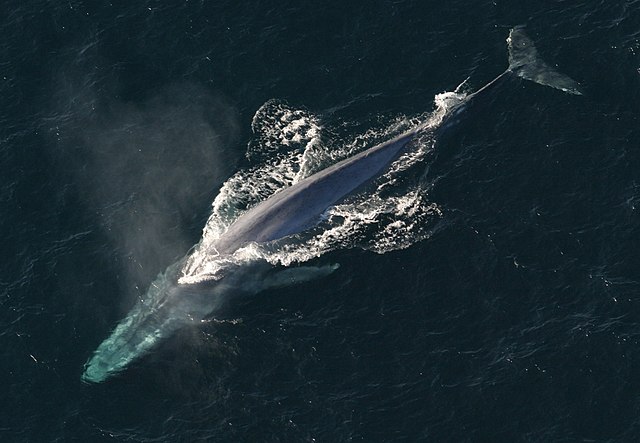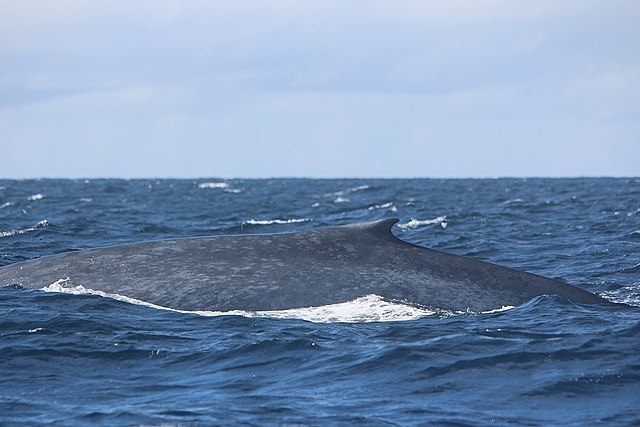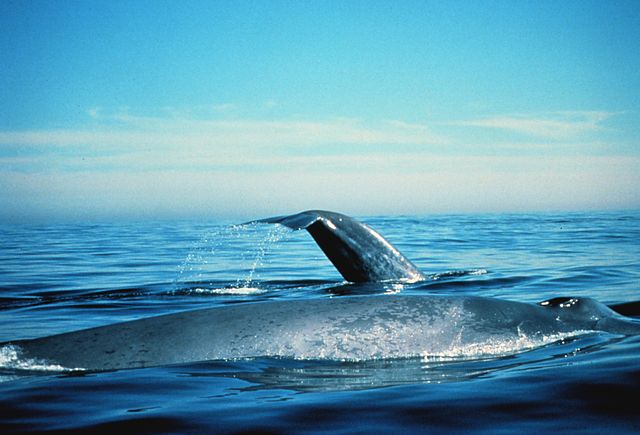Welcome to the world of the Blue Whale, the largest animal to ever exist on our planet. Standing at over 100 feet long and weighing up to 200 tons, these majestic creatures continue to awe and inspire us with their impressive size and remarkable abilities. Yet, despite their immense size, there is still so much we do not know about these incredible creatures.
In this article, we will dive into the wonders of the Blue Whale, exploring its physical characteristics, diet and feeding habits, social behavior, migration and breeding patterns, and the importance of its conservation. Our aim is to shed light on the marvels of this gentle giant and emphasize the need to protect its existence.
So, join us on this journey to discover the miracles of the Blue Whale and learn why it is essential to preserve its place in our oceans.
Table of Contents
The Blue Whale’s Physical Characteristics
The Blue Whale, also known as Balaenoptera musculus, is the largest animal on Earth. This magnificent creature can reach lengths of up to 100 feet and weigh over 200 tons. To put this into perspective, the average adult Blue Whale is longer than three school buses and heavier than 25 elephants! Its sheer size alone is enough to capture the awe and amazement of anyone who has the privilege of seeing one in the wild.

Despite being the largest animal on Earth, little is known about the Blue Whale. They spend the majority of their lives in the deep ocean, making it difficult for researchers to study them. However, through advancements in technology and dedicated research efforts, we are learning more and more about these incredible creatures.
The Blue Whale’s body is uniquely designed for survival in the ocean. They have streamlined bodies with a tapered snout and a broad, flat, and paddle-shaped tail. This allows them to swim at speeds of up to 30 miles per hour, making them one of the fastest marine mammals. Their flippers, which can grow up to 30 feet long, help them maneuver through the water and dive to great depths.
One of the most striking physical characteristics of the Blue Whale is its baleen plates. These are long, thin, and flexible plates that hang from the upper jaw and are used for filter-feeding. The Blue Whale’s diet consists almost entirely of krill, small shrimp-like crustaceans. These tiny creatures are filtered through the baleen plates, which act as a sieve, allowing the Blue Whale to consume up to 8,000 pounds of krill in a single day!
The Blue Whale’s skin is another unique feature. Despite its name, their skin is not actually blue. It is a mottled blue-grey color, giving them a beautiful and distinct appearance. This coloring helps them blend into their ocean surroundings and avoid predators. Their skin is also incredibly thick, measuring up to 10 inches in some places, providing insulation and protection from the cold ocean waters.
In addition to their physical characteristics, the Blue Whale’s body also goes through some remarkable changes throughout its lifespan. When they are born, they can weigh up to 3 tons and are around 25 feet long. As they grow, they go through a process called molting, where they shed their old skin and replace it with new, healthy skin.
Overall, the physical characteristics of the Blue Whale not only make it a magnificent marvel but also provide it with the necessary tools for survival in the ocean. From their size and weight to their baleen plates and skin, every aspect of their body serves a specific purpose in their survival.
However, despite their remarkable adaptations, the Blue Whale is facing numerous threats, including climate change and human activities, which are impacting their physical characteristics and overall survival. It is our responsibility to protect and conserve these incredible creatures for future generations to marvel at their magnificence.
The Blue Whale’s Diet and Feeding Habits
The Blue Whale, nature’s magnificent marvel, has captured the hearts and minds of people all over the world. From its massive size to its unique physical characteristics, this creature continues to fascinate and astound researchers and enthusiasts alike. But perhaps one of the most intriguing aspects of the Blue Whale is its diet and feeding habits. In this section, we will delve into the world of these gentle giants and discover the secrets of their diet.
As the largest animal on Earth, it is no surprise that the Blue Whale has quite an appetite. Their size alone is enough to make any human feel small – measuring up to 100 feet in length and weighing over 200 tons. To put this into perspective, a fully grown Blue Whale can weigh as much as 33 elephants combined! And while their size may be intimidating, it is a crucial adaptation that allows them to consume the massive amounts of food they need to survive.
So what exactly does the Blue Whale eat? These majestic creatures mainly feed on tiny crustaceans called krill, which are similar to shrimp. In fact, it is estimated that a single Blue Whale can consume up to 8,000 pounds of krill in a single day! That’s equivalent to the weight of six cars! This may seem like an astonishing amount, but considering their size, it is necessary for their survival.
But how do Blue Whales consume so much krill in one day? Their unique feeding technique is just as impressive as their size. They use a method called “lunge feeding,” where they open their massive mouths wide and engulf large amounts of water and krill. The water is then filtered out through their baleen plates, which act as a sieve, leaving behind the krill for them to swallow. This process happens quickly and efficiently, allowing Blue Whales to consume thousands of krill at once.
Unfortunately, the availability of krill is not always guaranteed for these gentle giants. Climate change has led to a decline in the population of krill, which is a crucial food source for Blue Whales. This can have a significant impact on their survival, as they need to consume large amounts of krill to maintain their size and energy levels. Furthermore, the decline in krill population can also affect the overall health of Blue Whale populations, making it a growing concern for conservationists.
In addition to their impressive feeding habits, Blue Whales also have unique social behaviors. They are typically solitary creatures, but occasionally, they can be seen in small groups. They communicate with each other through a series of low-frequency sounds, known as songs. These songs can travel long distances and are believed to be used for mating and social interactions. The importance of these social interactions for the well-being of the species cannot be underestimated.
During their migration, Blue Whales travel thousands of miles each year, often moving to warmer waters to breed. Breeding behaviors include unique courtship rituals, and once the female gives birth, she will care for her calf for about a year. However, the calves are not without their threats. Orcas, or killer whales, are known to prey on Blue Whale calves, making the protection of breeding grounds crucial for their survival.
Despite being a protected species today, Blue Whales have faced severe threats in the past. Historically, they were hunted for their valuable oil and meat, which led to a significant decline in their population. However, thanks to the efforts of conservation organizations and governments, such as the International Whaling Commission and the establishment of Marine Protected Areas, the population of Blue Whales has shown signs of recovery.
In conclusion, the Blue Whale’s diet and feeding habits are nothing short of extraordinary. From their massive appetites to their unique feeding technique, they continue to amaze and intrigue us. However, the decline in krill population due to climate change serves as a reminder of the importance of protecting these gentle giants and their habitat. As individuals, we can play a role in their conservation by supporting efforts and making small changes in our daily lives to reduce our impact on the environment. After all, the Blue Whale is truly a magnificent marvel that deserves to thrive in our oceans for generations to come.
Social Behavior of Blue Whales
The Blue Whale may be known as a solitary creature, but that doesn’t mean they don’t have a complex social life. While they typically travel alone, they have been observed in small groups occasionally. These groups usually consist of family members or potential mates.
Communication is a crucial aspect of the Blue Whale’s social behavior. They use various methods to communicate with each other, including their unique songs. These songs can travel for miles underwater and are believed to be used for mating purposes, as well as establishing territories and maintaining social bonds.

These songs are not only incredibly beautiful, but they also play a vital role in the well-being of the species. Blue Whales are highly social animals, and these songs help them stay connected and navigate their vast ocean environment. The loss of these songs would have a significant impact on their social interactions and survival.
In addition to songs, Blue Whales also use body language to communicate with each other. They can breach, slap their tails or flippers, and make various sounds through their blowholes to convey messages. These behaviors can indicate aggression, playfulness, or even a warning to other whales in the area.
Another fascinating aspect of the Blue Whale’s social behavior is their ability to form alliances. These alliances often consist of two or more Blue Whales working together to hunt for food. By working together, they can corral schools of krill into one area, making it easier for them to feed. These alliances can be formed between individuals of any age or gender and can last for several months or even years.
Blue Whales also have a unique bond with their young. Female Blue Whales typically give birth every two to three years, and their calves stay with them for at least a year before becoming independent. During this time, the mother and calf have a strong bond, and the mother is very protective of her young, often using her large body as a shield.
Unfortunately, these social behaviors are being threatened by human activities, such as noise pollution and commercial shipping. The constant noise from these activities can interfere with the Blue Whale’s communication and disrupt their social interactions. This disturbance can cause stress and impact their overall well-being.
It is crucial to protect the Blue Whale’s natural habitat and reduce any human-made threats to their social behaviors. This can be achieved through initiatives like creating marine protected areas, reducing noise pollution, and promoting responsible whale watching practices. As responsible individuals, we should also make an effort to educate ourselves and others about the importance of these magnificent creatures and their social behaviors.
In conclusion, while Blue Whales may seem like solitary animals, they have a complex social life that is necessary for their survival. Their unique communication methods, social bonds, and alliances all play a crucial role in the well-being of the species. It is our responsibility to ensure that these social behaviors are protected and preserved for future generations to witness the marvel of the Blue Whale.
Migration and Breeding Patterns
Blue Whales are known for their incredible migratory patterns, with some individuals traveling thousands of miles each year. These migrations are essential for the survival of the species, as they allow the whales to reach their preferred feeding and breeding grounds. In this section, we will explore the fascinating migration and breeding patterns of Blue Whales and the challenges they face along the way.
Migration:
Blue Whales are found in most of the world’s oceans, but they are known to migrate to specific regions for feeding and breeding purposes. These migrations are triggered by the changing seasons and the availability of their primary food source, krill. During the summer months, when krill is abundant in polar waters, Blue Whales can be found in the Arctic and Antarctic regions. As winter approaches, they begin their long journey towards the equator, where they can find warmer waters and a new supply of krill.
These migrations can be extensive, with some Blue Whales traveling up to 10,000 miles in a single journey. They are also known to dive to incredible depths, up to 500 meters, during their migration. This is a remarkable feat for an animal of their size and weight. To put it into perspective, Blue Whales can swim the equivalent of 17 football fields in just one minute!
Breeding:
Breeding is another crucial aspect of Blue Whale’s lives, and they have unique behaviors and rituals surrounding it. During the winter months, Blue Whales gather in warmer waters for breeding purposes. Male Blue Whales will compete for the attention of females by performing acrobatic displays such as breaching and slapping their tails on the water’s surface. This behavior is not only used for mating purposes but is also believed to help establish dominance within the group.
Once a female has chosen a male, the two will engage in courtship rituals, which can last for hours. These behaviors include rolling, diving, and swimming in synchronized patterns. After mating, the female will carry the calf for about 10-12 months before giving birth. The breeding season is a critical time for Blue Whales, and any disturbance or threat during this period can have severe consequences for the species.
Threats:
Unfortunately, Blue Whales face numerous threats during their migration and breeding patterns. Their long journeys put them at risk of collisions with ships and entanglement in fishing gear. Additionally, their primary food source, krill, is facing depletion due to the impacts of climate change. This can have a significant impact on the Blue Whale population, as they require large amounts of krill to survive and breed.
Furthermore, Blue Whale calves are vulnerable to predators such as killer whales and pollution. Noise pollution from human activities, such as oil drilling and shipping, can disrupt their communication and navigation, making it difficult for them to find food and navigate their migration route. This highlights the importance of protecting their breeding and feeding grounds to ensure the survival of the species.
Conclusion:
In conclusion, the migration and breeding patterns of Blue Whales are not only impressive but also crucial for their survival. These gentle giants travel vast distances, face various challenges, and perform unique behaviors to ensure the continuation of their species. However, their population is still at risk, and it is our responsibility to protect their habitats and make sustainable choices to reduce our impact on the ocean’s ecosystems. Let us all do our part in preserving the magnificent marvel of nature that is the Blue Whale.
Conservation Efforts for Blue Whales
It is no secret that the Blue Whale population has faced a significant decline in the past due to human activities, particularly hunting. However, in recent years, there has been a concerted effort to protect and conserve these magnificent creatures. In this section, we will discuss the historical hunting of Blue Whales, the current conservation efforts, and how individuals can contribute to protecting these gentle giants and their habitat.
Historically, Blue Whales were heavily hunted for their valuable oil, meat, and baleen plates. This led to a severe decline in their population, with estimates suggesting that their numbers decreased by 90% in certain areas. However, in 1986, the International Whaling Commission (IWC) imposed a moratorium on commercial whaling, which has since helped in the recovery of Blue Whale populations. Today, the IWC continues to regulate and monitor the hunting of Blue Whales, ensuring their protection and conservation.

In addition to the IWC, various governments and conservation organizations have implemented measures to protect Blue Whales. For instance, the United States established the Blue Whale Recovery Plan in 1998, which aims to conserve and recover the species through research, monitoring, and conservation efforts. Similarly, the Australian Government has designated the Blue Whale as a protected species under the Environment Protection and Biodiversity Conservation Act of 1999. This means that any activity that may harm or kill Blue Whales is strictly prohibited.
One of the most significant conservation efforts for Blue Whales is the establishment of Marine Protected Areas (MPAs). These are designated areas where human activities are limited or restricted to protect marine species and their habitats. MPAs provide a safe haven for Blue Whales, allowing them to feed, breed, and migrate without disturbance. These protected areas also contribute to the overall health of the ocean ecosystem, which is crucial for the survival of these gentle giants.
But conservation efforts do not stop at government and organizational levels; individuals also have an essential role to play in protecting Blue Whales. The first step is to educate ourselves and others about the threats faced by these creatures and their importance to the ocean ecosystem. We can also make small changes in our daily lives to reduce our impact on the ocean, such as reducing plastic use and properly disposing of waste.
Furthermore, you can support conservation organizations and their work towards protecting Blue Whales by donating or volunteering. Many organizations work on research, monitoring, and conservation efforts for Blue Whales and rely on donations to continue their work. Your contribution, no matter how small, can make a significant impact on the conservation of these magnificent creatures.
In conclusion, the Blue Whale is a natural marvel, and its conservation is crucial for the health of our oceans. Thanks to the efforts of governments, conservation organizations, and individuals, their population is slowly recovering. However, there is still a long way to go, and it is vital to continue our efforts to ensure the survival of these gentle giants. Together, we can help protect the Blue Whale and its habitat for generations to come.
